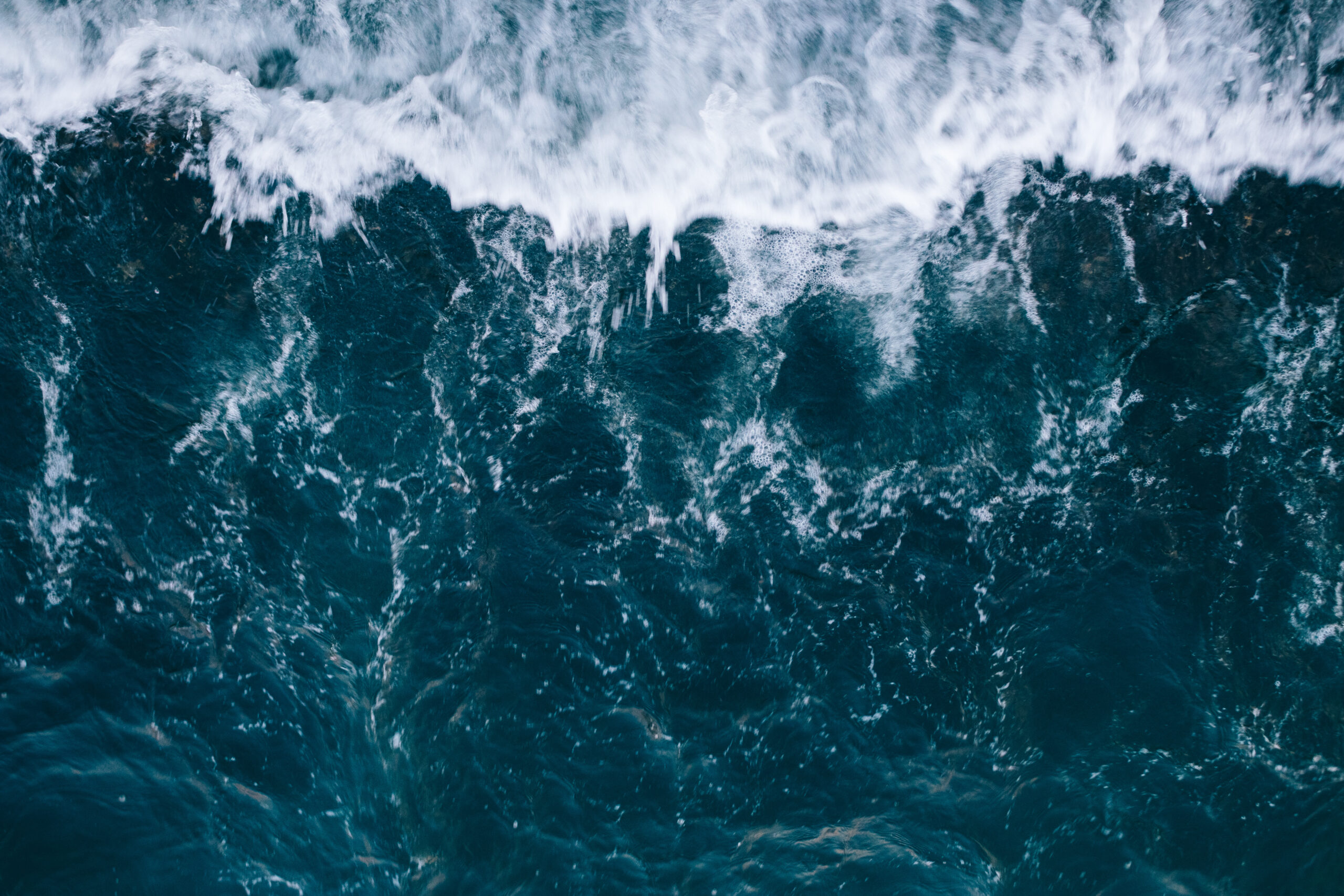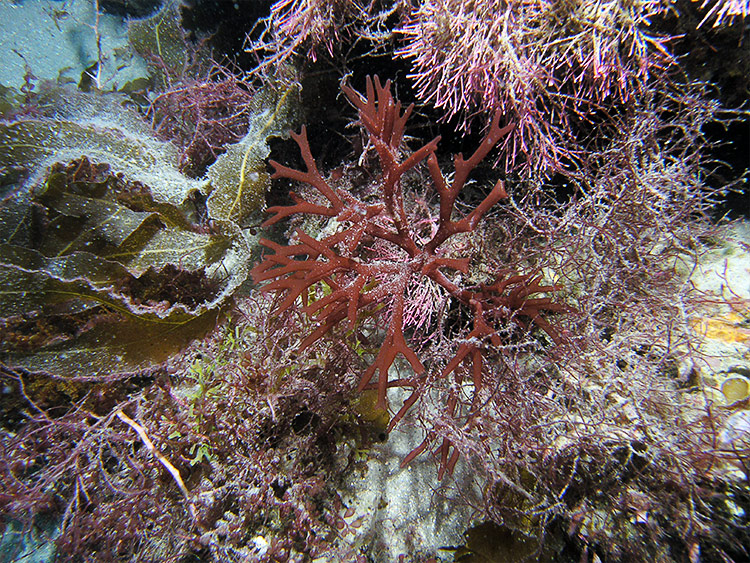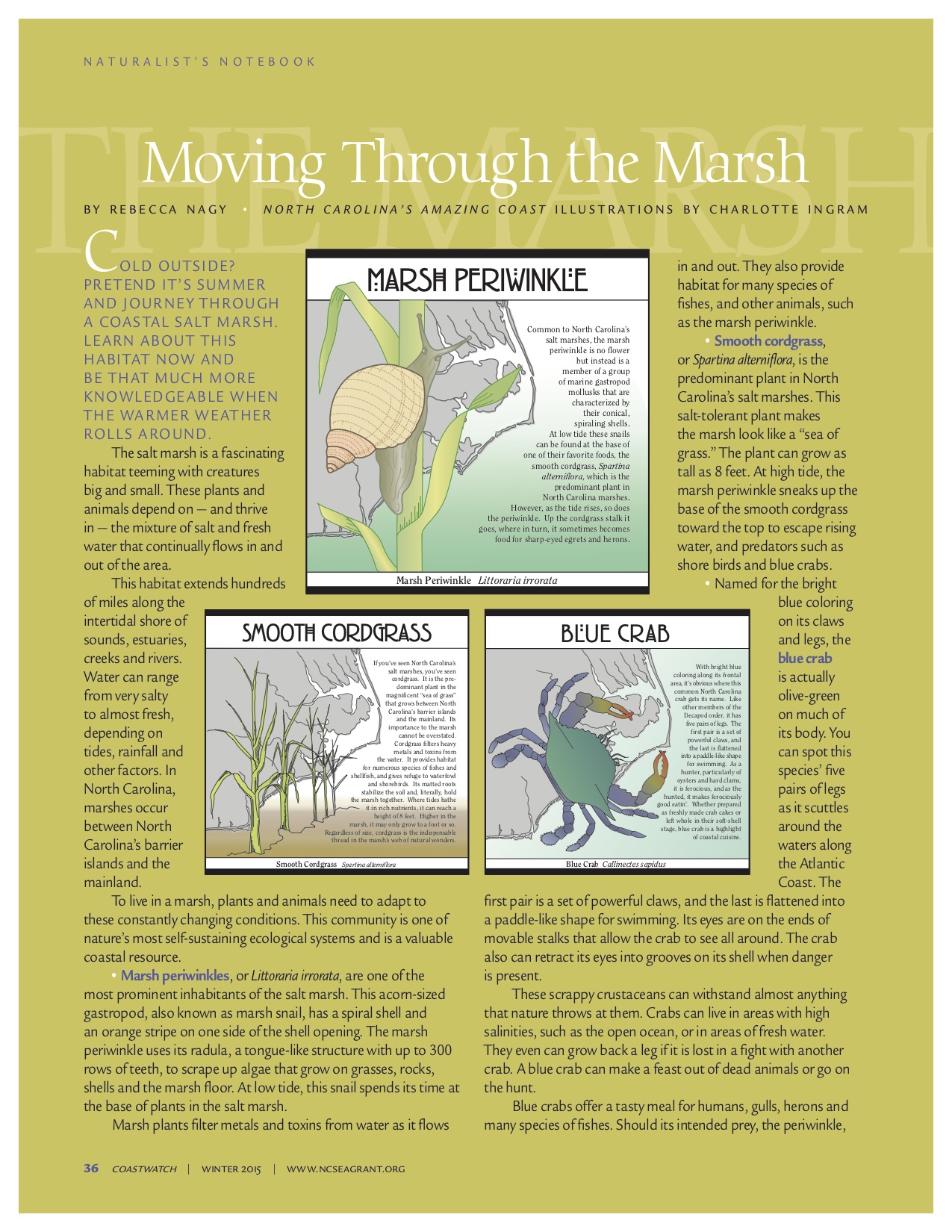MUSIC IN THE MARSH: The Summer Soundscapes of the Rachel Carson Reserve
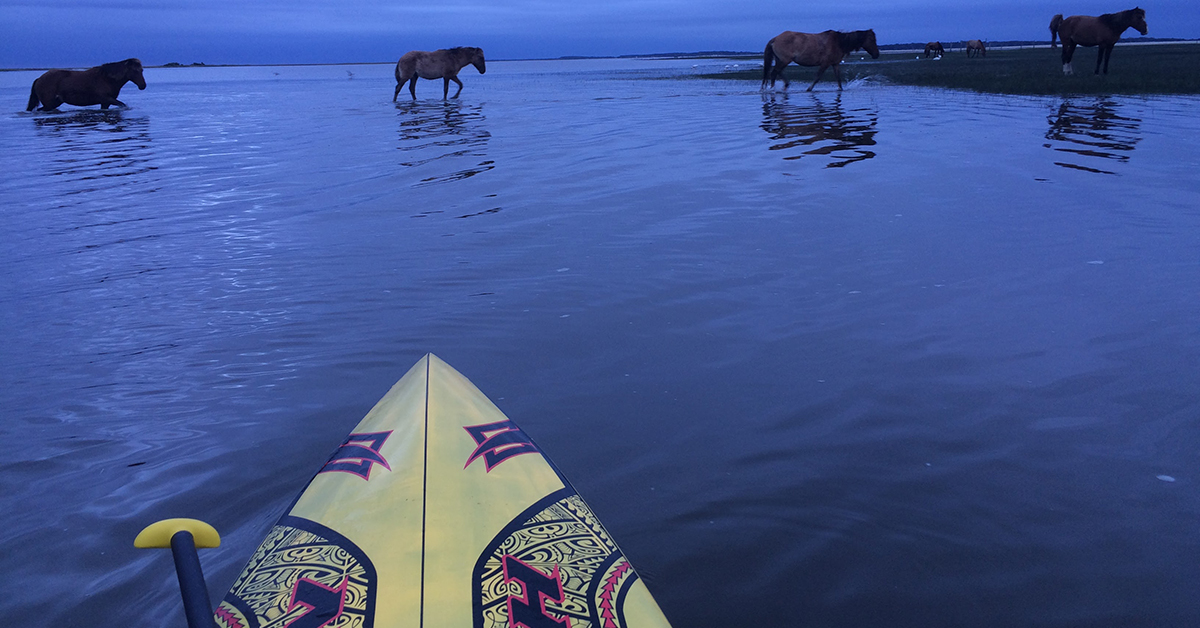
A master’s student at North Carolina State University, Shannon Brown received a 2014 N.C. Coastal Research Fellowship from North Carolina Sea Grant and North Carolina Coastal Reserve to study soundscapes in the Rachel Carson Reserve. She has a bachelor’s degree in marine science from the University of Maine, and was an education intern at the Smithsonian Environmental Research Center.
Close your eyes and imagine you are standing on the corner of a busy city street. What do you hear? The crossing sign beeping, cars buzzing by, groups of people talking — all of these sounds make up the city’s soundscape.
Though we know a lot about terrestrial soundscapes, there is a lack of understanding of underwater soundscapes, particularly in coastal environments.
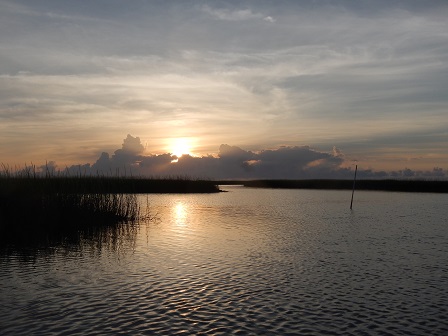
A soundscape is the combination of the sounds of the environment, including biological (the croak of a croaker), physical (rain falling on the surface of the water) and human (the buzz of a boat motor) sources of sound. The collection of sounds from all of these sources produces a unique sonic profile for that location.
Before coming to North Carolina State University, I had only thought of underwater sound as it relates to whales and dolphins. As an ecologist, I am learning that sound can be used to study how a wide array of organisms interact with their environment. The emerging field of soundscape ecology provides a new and exciting way to look at these interactions.
My advisor, David Eggleston, is a marine scientist and director of NC State’s Center for Marine Sciences and Technology, or CMAST. He describes this project as an opportunity to go beyond what traditional sampling gear, such as trawls and throw traps, can tell us about how fish use different habitats.
“By putting hydrophones out and recording the sounds of these fish — when they are vocalizing for mating or what have you — we can start to get a sense of what species are using that habitat at certain times, and particularly at night when it’s much harder to sample,” he says.
SOUND SCIENCE
Animals use a suite of senses to accomplish their needs, including visual, chemical and physical cues. In the marine world, light is limited, so vision is not a dominant sense. Chemical cues can be missed if they are redirected by currents. Unlike light, sound can travel long distances underwater and, unlike chemicals, is not directly altered by currents. This makes it a perfect way for animals to communicate in the ocean.
Sound also is used for many other ecological processes, including navigation, foraging, defense and finding a mate. A growing body of research shows that some species, such as oysters in the larval stage, may use sound, in addition to other cues, to find suitable settlement habitat.
Gaining an understanding of what habitats sound like, and what animals use sound for, is important to understanding the life history of economically and ecologically important species ranging from sound-producing fish, such as red drum, to reef-building oysters.

The Rachel Carson Reserve is part of the N.C. National Estuarine Research Reserve. North Carolina’s reserve sites are well studied — especially its animals and water quality — but few studies have examined reserve soundscapes. For this reason, I chose to conduct a soundscape study of the habitats within the Middle Marsh portion of the Rachel Carson Reserve.
“This work is a novel system-wide approach to the soundscapes in Middle Marsh,” notes John Fear, Sea Grant deputy director. “Middle Marsh is one of the most studied areas on the East Coast, so finding a project to add a new piece of information for this site was very appealing.”
Middle Marsh has a range of soundscape sources in a small area due to its diverse collection of estuarine habitats. These include submerged aquatic vegetation, marsh, oyster reef and unstructured areas. Its proximity to navigation channels also makes it an ideal study area because of its accessibility and opportunities to examine the impact of anthropogenic sounds, such as boat noise.
Armed with eight underwater sound recorders called SoundTraps, garden fence posts and, of course, zip ties (marine scientists love these things), I set out to characterize the soundscapes of Middle Marsh. By hammering in stakes and affixing recorders to them with the ties, our team deployed recorders at eight different sites. All of the SoundTraps were set to record simultaneously for two minutes every 20 minutes during June, July and August 2014.
Even with a direct hit from Hurricane Arthur in July, all of my recorders survived their time in Middle Marsh. At the end of the summer, I was left with close to 40,000 sound recordings. With the field season coming to a close, I sat down at my computer and started to process them.
LOOKING FOR PATTERNS
Some of the goals of this project are to provide a basic soundscape characterization for Middle Marsh, investigate what patterns may exist and try to explain those patterns.
Though it might seem counterintuitive, soundscape ecologists rarely rely on their ears to analyze recordings. We use quantitative measures such as sound pressure levels, or how loud sound is, as well as measures like frequency to determine potential sources of sound. These measures also allow us to describe differences between sites and how sites change over time.
We also use graphs to visualize soundscape changes. One such graph is called a spectrogram, which is much like a musical score. On the x-axis you have time, on the y-axis you have frequency, or pitch. The colors represent how loud the sound is, with cooler blue colors being quiet and brighter red colors being louder.

What I have found so far is that there are daily and lunar patterns in the soundscape, mostly driven by soniferous, or sound-producing, animals. The main character appears to be the silver perch, a fish species that gathers in large aggregations at night to spawn.
The male silver perch produces a sound to attract females — in essence a perch “love song” — that gets louder at night. Fish sounds, like the nightly silver perch chorus, show us differences in soundscapes between sites. We can identify which sites fish use, leading to further investigation of why they might be using that area.
In addition to the dominant chorus by the silver perch, we also have the characteristic boatwhistle, or “boop,” of the oyster toadfish, the drumming sound characteristic of the red drum, as well as calls that I am still working to identify.
Tides also seem to influence soundscape characteristics. As the water rises and moves over and through habitats, sound is produced. More of the habitat is underwater, allowing sound-producing and other fish to move into those areas with the rising tide. This results in a louder soundscape than at lower tides.
Another dominant sound in the Middle Marsh soundscape is the popping or crackling sounds produced by snapping shrimp. In contrast to the lower-pitched fish noises, which seem to be driven by tides, the higher-frequency popping of snapping shrimp appears to be closely linked to time of day. More, and louder, snaps occurred at night than during the day while I studied the area.
AN UNEXPLORED DIMENSION
Though it is fun to listen in on the music of the marsh and surrounding areas, how can we use soundscape studies?
What is most exciting to me is that we can use soundscapes to learn about an unexplored dimension of the marine environment. Though we know animals are using and producing sound, we have only begun to scratch the surface when it comes to listening to and characterizing the individual sounds animals make, and the overall soundscapes of the habitats in which they live.
Nature is messy. Whereas previous studies have characterized discrete habitat types, such as coral or oyster reefs, this study is giving us a glimpse into what a mosaic of habitat types, located in a popular recreational boating area, sounds like. Analyzing the summer soundscape helps us understand what sound-producing organisms are using the Reserve habitats and when they are present.
“It will provide researchers a baseline characterization of the Middle Marsh soundscape, information on ‘when, where, and what’ species are using particular habitats, and a tool for conducting rapid assessments of biodiversity and habitat quality similar to efforts in terrestrial systems,” notes Brandon Puckett, research coordinator for the N.C. Coastal Reserve.
“Recordings can be used to inspire audiences of all ages to think about habitats and aquatic species in ways that perhaps they have not previously,” he adds.
Current monitoring efforts include sampling plants and animals, or the habitat itself, to assess habitat quality and health. If we are able to determine the acoustic characteristics of healthy or high-quality habitats, versus those of unhealthy or low-quality habitats, passive acoustic monitoring may provide a less intrusive way to monitor habitat health, type and quality.
By conducting soundscape studies in areas that have not been characterized before, we are developing methods of sound collection, as well as providing insight into how to best process acoustic data. These collection and processing methods will be key to passive acoustic management efforts in the future.
“A picture is worth a thousand words, but a soundscape is worth one thousand pictures,” says Bernie Krause, one of the founders of terrestrial soundscape ecology.
With their internal instruments, the fish, invertebrates and mammals of the marsh and surrounding areas each contribute to an underwater chorus. Studying this shows us how these animals live in an ever-noisier underwater world, one that we are now just getting the chance to listen in on.
To listen to Shannon Brown’s recordings, visit ncseagrant.org and search for “Sounds of the Sound.”
*********************************************************************************************
ASPIRING ENVIRONMENTAL EDUCATOR

After graduate school, Shannon Brown hopes to work in environmental education, inspiring the next generation of marine scientists. To that end, she is heavily involved with the Scientific Research and Education Network, or SciREN, a group that brings together teachers and researchers to exchange ideas and materials.
“Shannon’s project also is interesting because of her desire to translate the results to nonscientists,” says John Fear, North Carolina Sea Grant deputy director.
At a recent SciREN networking event, Brown shared a lesson plan for grades 1 and 2 that she developed based on her research. The plan introduces students to the concept of habitat-associated sounds and how marine animals, such as the oyster, use those sounds to find a suitable home.
Students first learn about the oyster life cycle and sounds of the oyster reef. They then “become” the oyster reef and act out the process of oyster settlement. Some will be oyster larvae searching for a reef. Others will make the sounds of fish, shrimp, or wind and waves to either distract or guide the larvae.
In addition to SciREN, Brown also has explained her work on the early life stages of marine animals at the N.C. Museum of Natural Sciences Engaging the Public in Science program and the Fletcher Academy Science Expo.
“At both the museum and the school, most visitors recognized the adult organisms, such as an oyster or a blue crab, as something they’d once had on their dinner plate,” Brown notes. “But they had never thought about what a baby, or larval, oyster looked like and how it gets to its final home — a very important step in the life cycle of these animals.” — R.R.
This article was published in the Summer 2015 issue of Coastwatch.
For contact information and reprint requests, visit ncseagrant.ncsu.edu/coastwatch/contact/.
- Categories:
